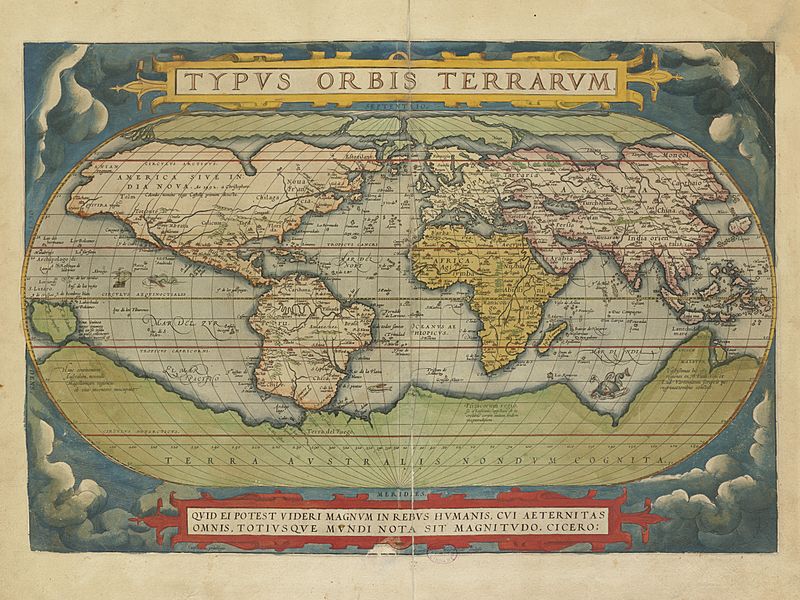Image: Typus orbis terrarum - Norman B. Leventhal Map Center at the BPL

Description: Zoom into this map at maps.bpl.org. Author: Ortelius, Abraham Publisher: A. Ortelius Date: 1570. Scale: Scale not given. BPL Call Number: G1006 .T54 1570 View at the Norman B. Leventhal Map Center Ortelius' book of maps, first published in 1570, is considered the first modern world atlas. It was the first time that a set of maps, contemporary to the date of publication, was designed, drawn, and engraved with the intention of publishing them in a bound volume. Ortelius did not refer to his publication as an "atlas," as we know it today. Rather he entitled it "Theater of the World" implying not only that the entire known world could be viewed in this one book, but that the Earth was a stage on which human actions unfolded. Although most of the maps in this book pertain to European countries and provinces, it can be considered a world atlas because it also includes a map of the world (displayed here), as well as one map for each of the four continents. This world map was based on a large 21-sheet world map published by Ortelius' colleague, Gerard Mercator the year before. It displayed almost a century of European exploration in the Americas delineating relatively accurate coast lines in the Equatorial areas, but with greatly distorted shapes in southern South America and northern and western North America. Interestingly, the map prematurely showed a southern polar continent since the southern oceans had not yet been explored. The projected southern continent was based on the reports of Magellan sighting Terra del Fuego when he rounded the tip of South America and the accounts of early Dutch discoveries along the Australian coast. While the first edition of Ortelius' Theatrum Orbis Terrarum was published in Latin in 1570, this map book was subsequently issued in 33 editions over the next 41 years. It was also translated into six other languages -- German, Dutch, French, Spanish, Italian, and English. The success of this first "atlas" publication marked the beginning of the golden age of Flemish and Dutch cartography with cartographers from the Low Countries dominating the map trade until the end of the 17th century.
Title: Typus orbis terrarum - Norman B. Leventhal Map Center at the BPL
Credit: Typus orbis terrarum
Author: http://maps.bpl.org
Usage Terms: Creative Commons Attribution 2.0
License: CC BY 2.0
License Link: https://creativecommons.org/licenses/by/2.0
Attribution Required?: Yes
Image usage
The following page links to this image:

